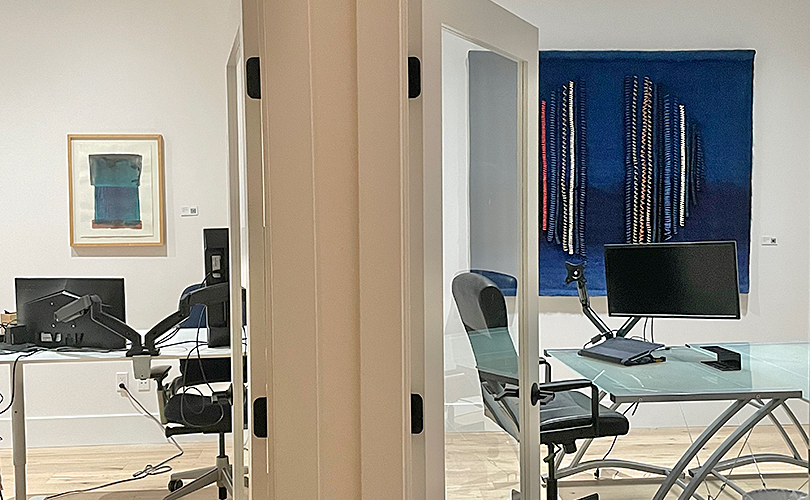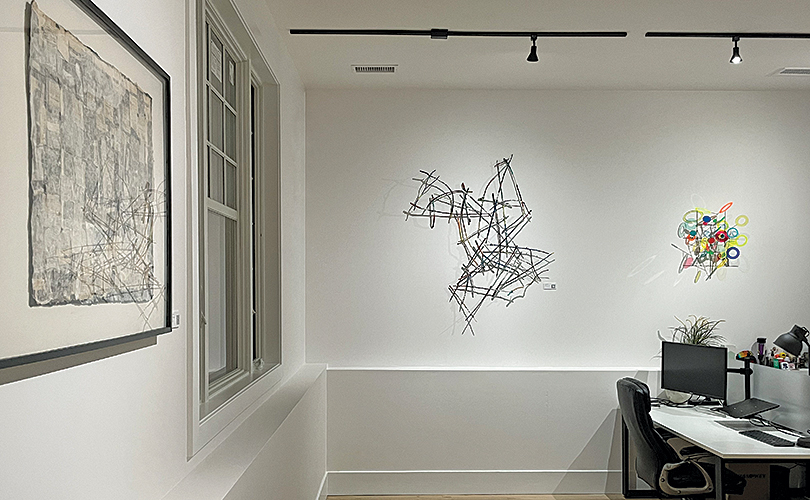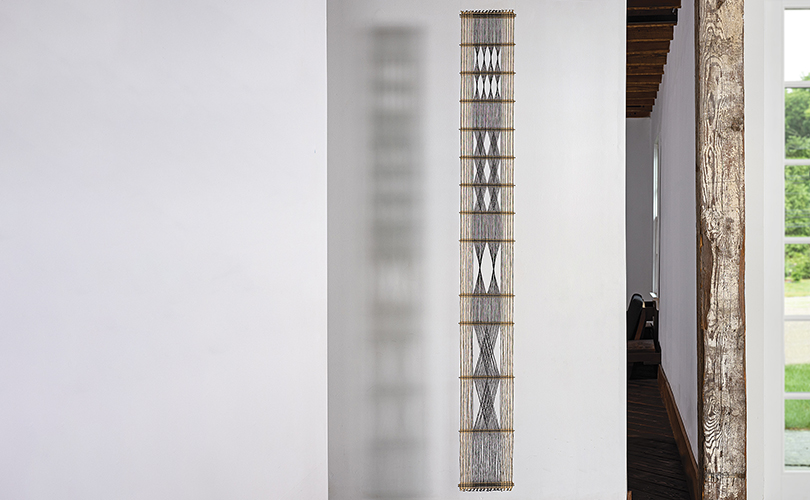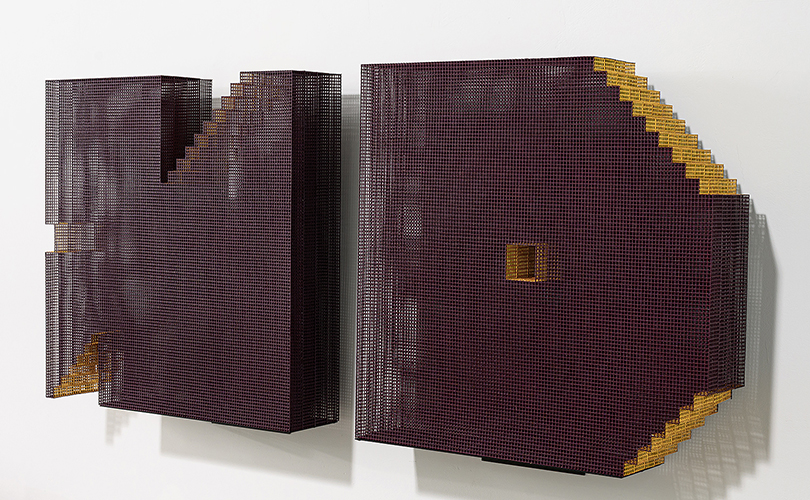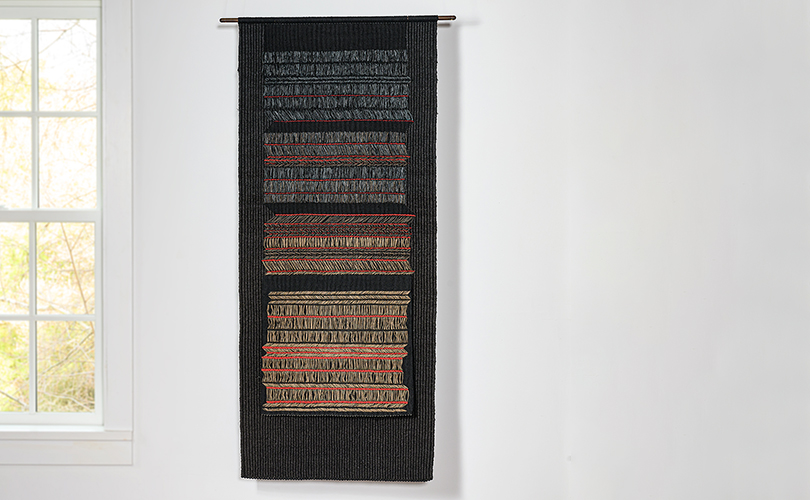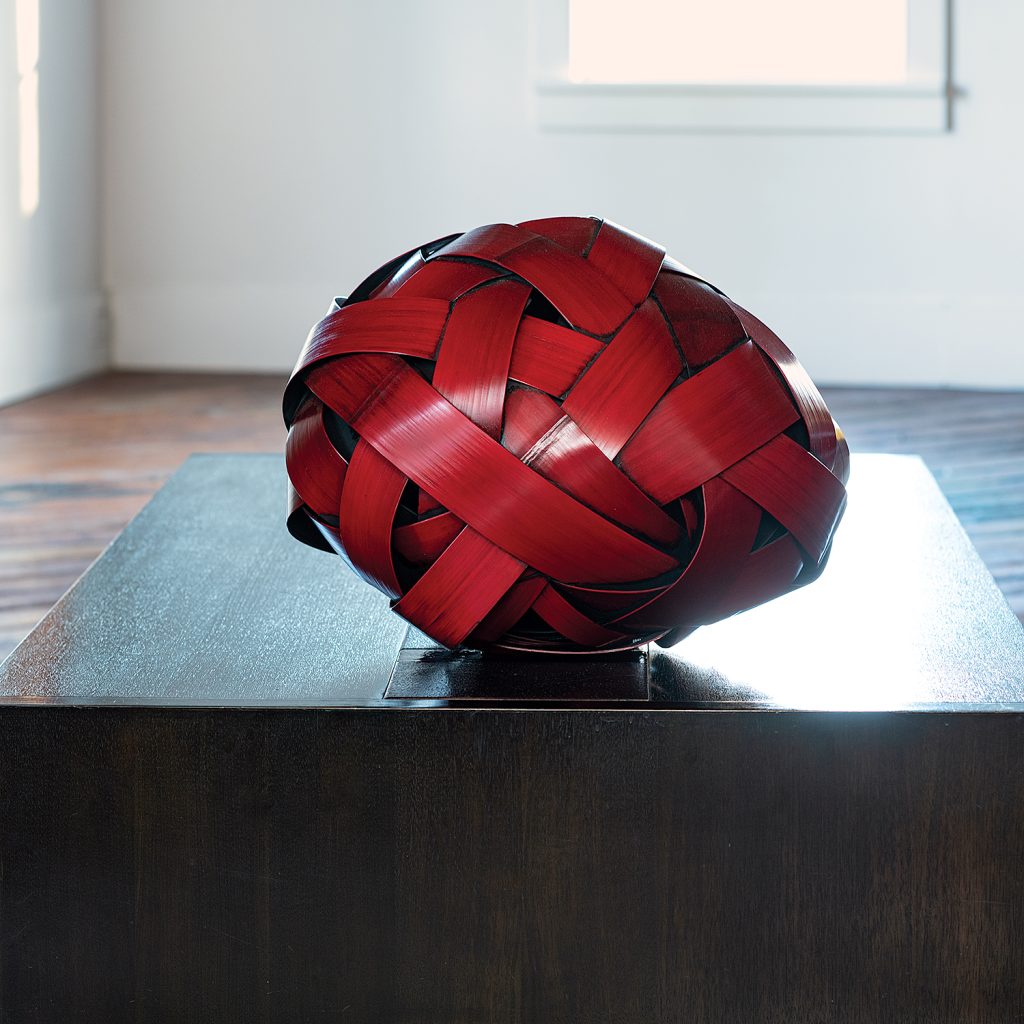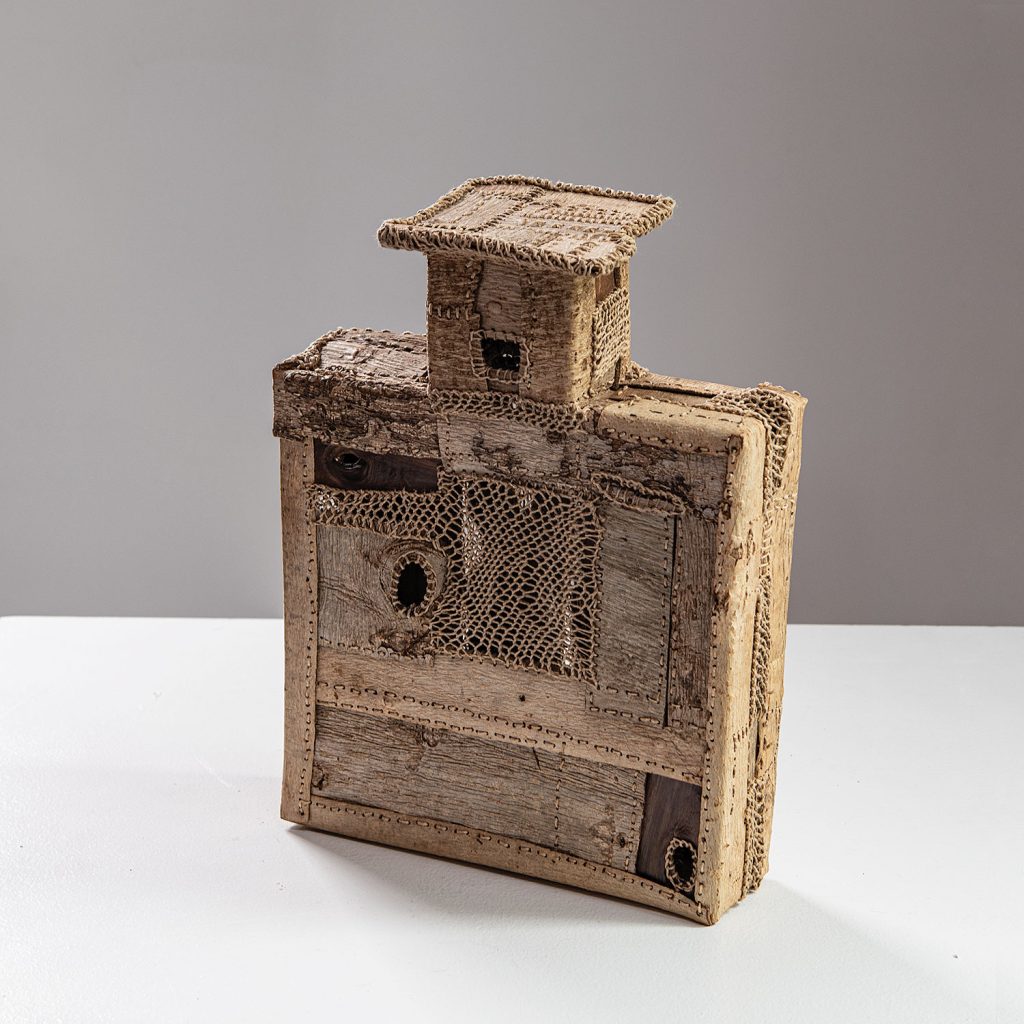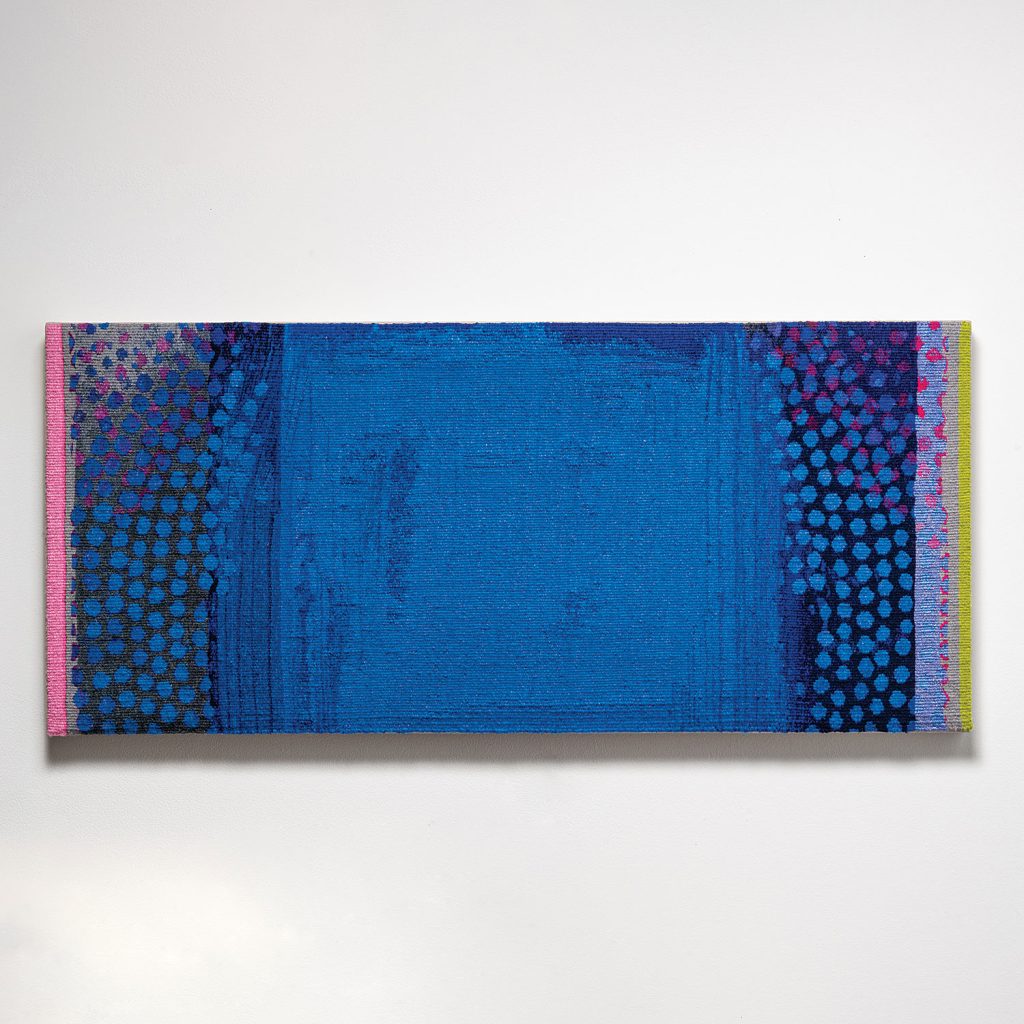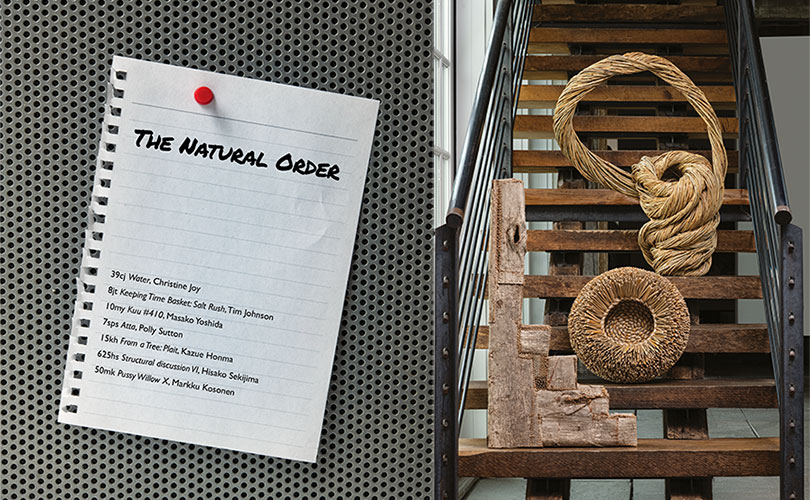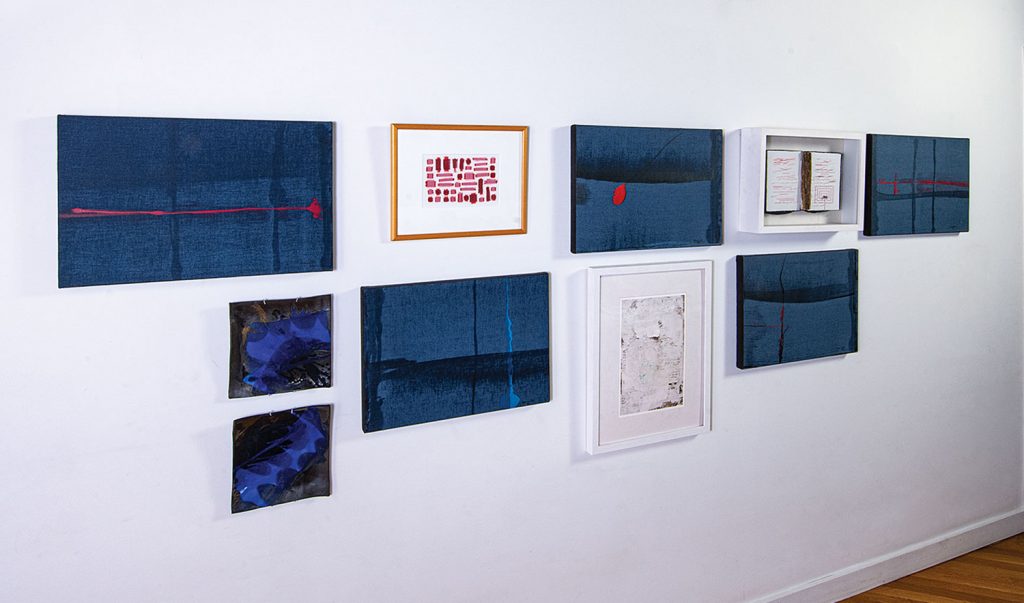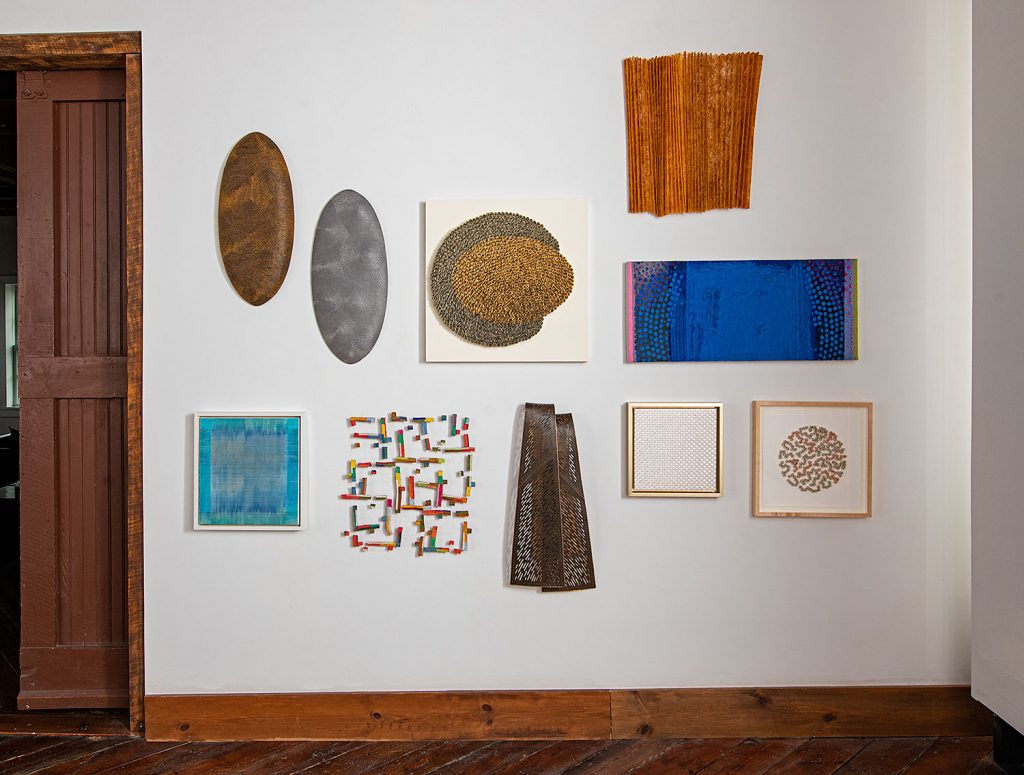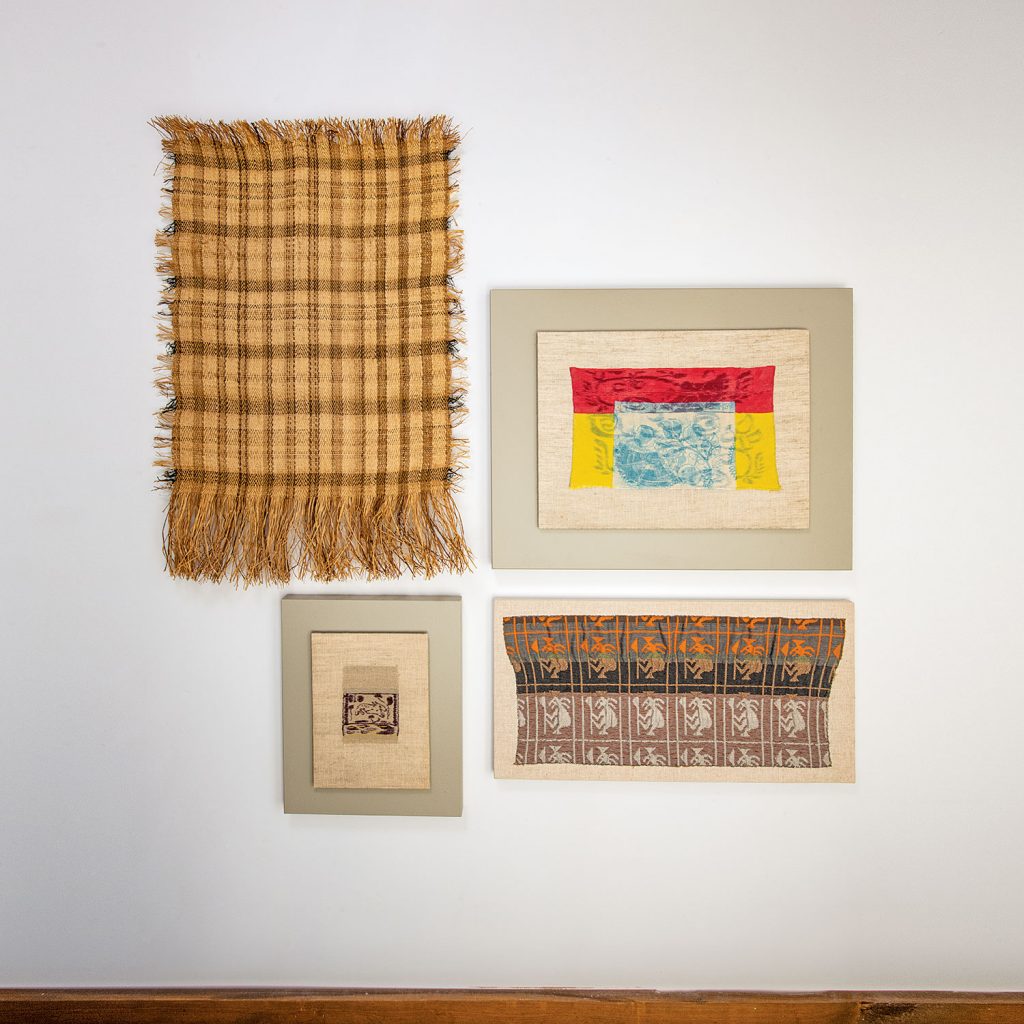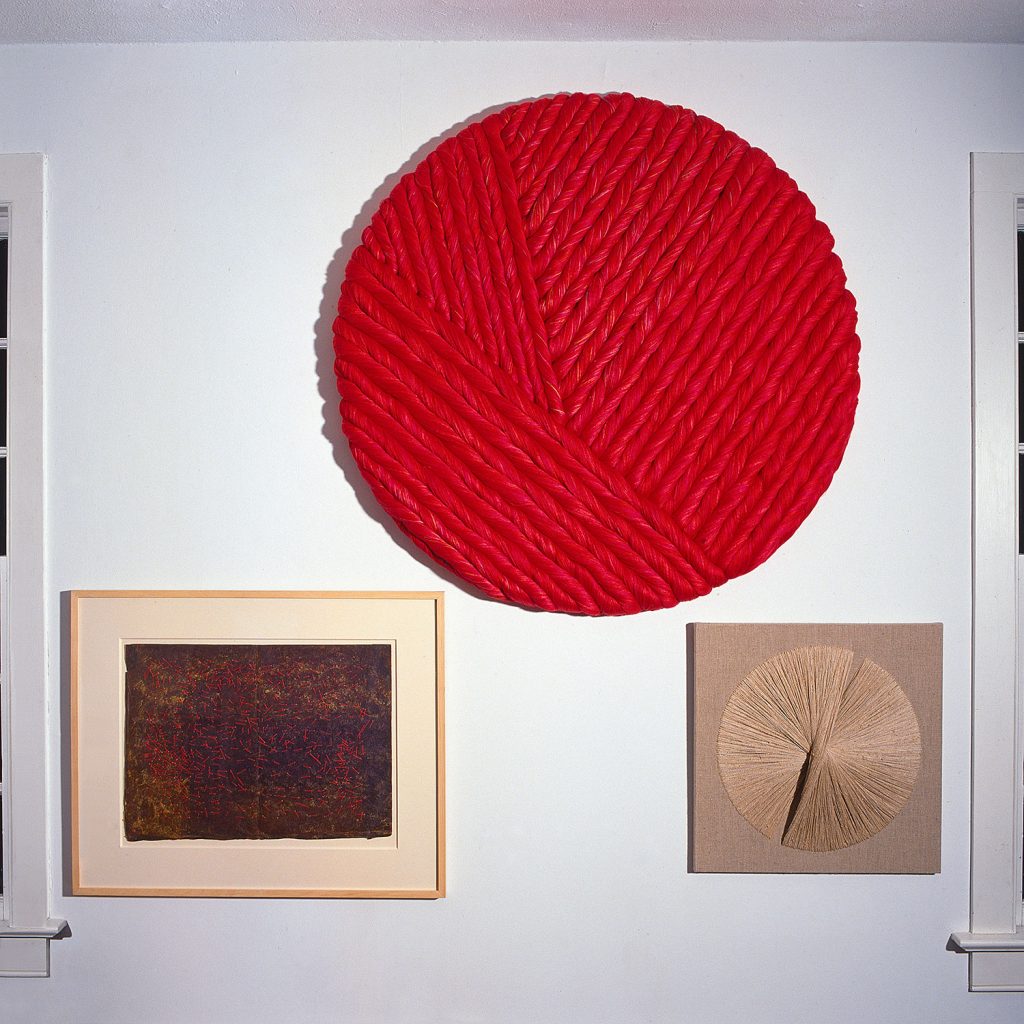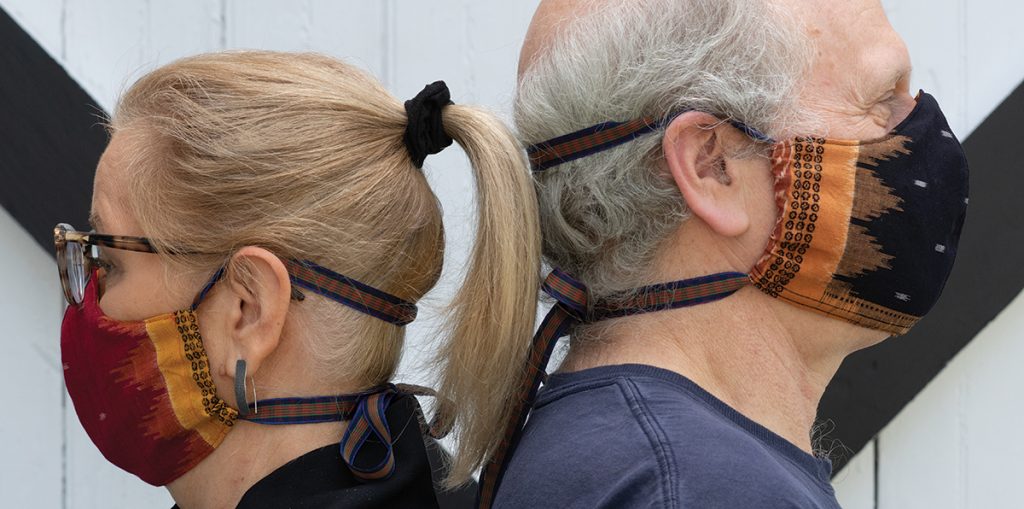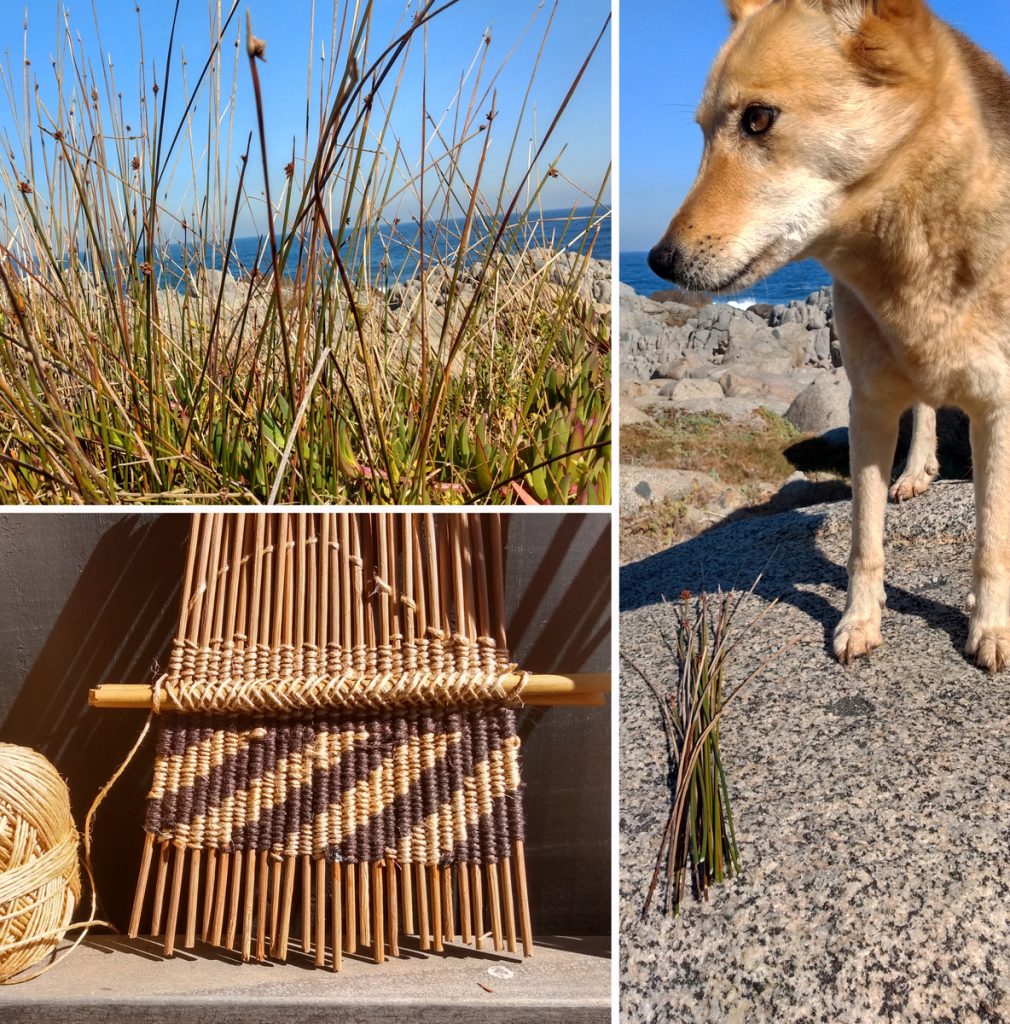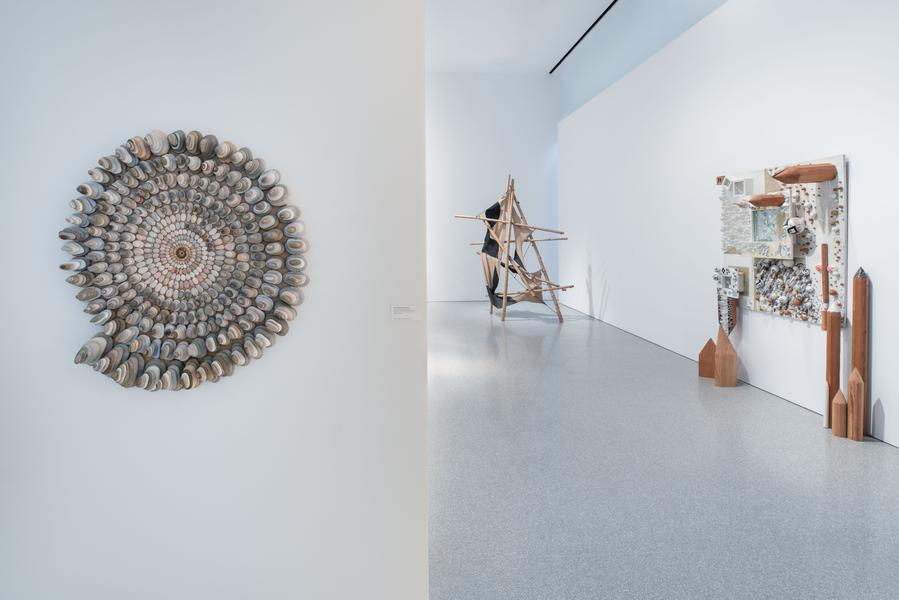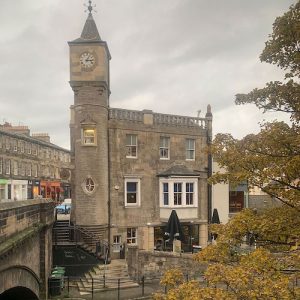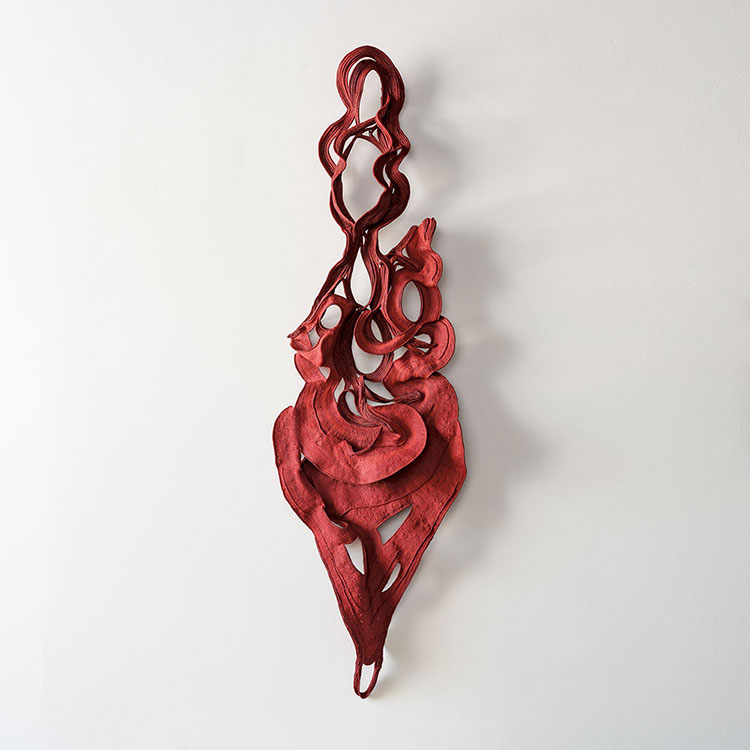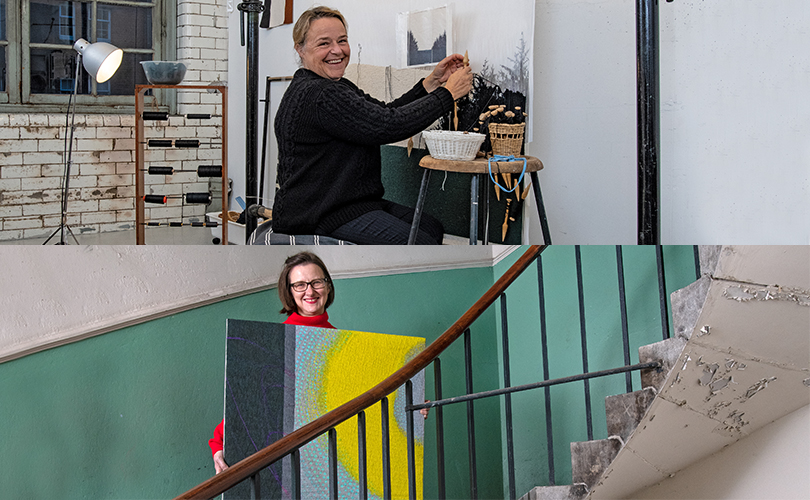
Welcome to Noteworthy, the first in an occasional series on topics we think are worth a closer look. In number one, our focus is on Jo Barker and Sara Brennan, two contemporary tapestry artists from Scotland.

Scotland has a storied tapestry tradition, from the well-regarded Dovecot Tapestry Studio, founded in 1912, to the program at the College of Art at the University of Edinburgh. The country’s most ambitious entry is the Great Tapestry of Scotland (though technically an embroidery). It was hand stitched on linen woven by Peter Greig & Co in Kirkaldy, who have been at it since 1825. It involved 1000 people from across the country, 160 linen panels, and 300 miles of wool – enough to stretch the entire length of Scotland.
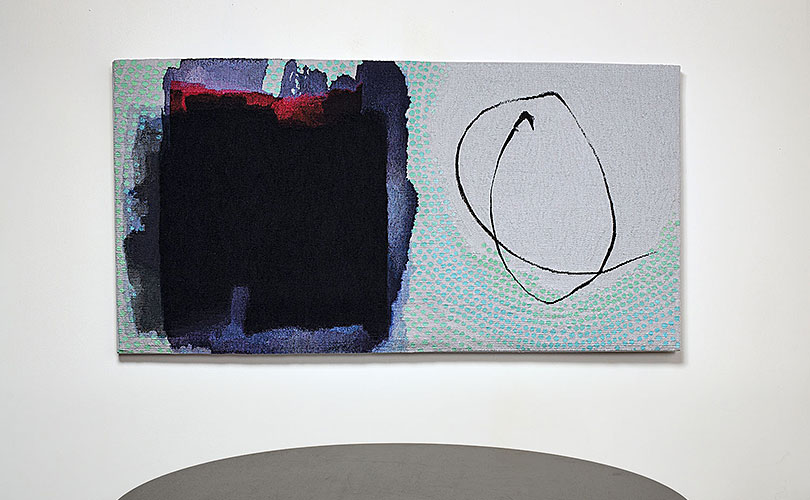
cotton, wool, woven, linen, silk and embroidery threads, 28.5” x 54”, 2015, photo by Tom Grotta
Two of the artists that work with browngrotta artists, Jo Barker and Sara Brennan, studied together at the College of Art in Edinburgh where the basic assumption is that tapestry can be used as a visually rich and dynamic medium in contemporary art practice.

Barker and Brennan were born in the same year and their studios are in the same building in Edinburgh now. They exhibited together in A Considered Place at Drum Castle in Aberdeenshire a few years ago. Both artists are accomplished and well recognized — Barker is a recipient of the Cordis Prize for Tapestry. Each creates elegant, evocative works that provide a painterly experience from a distance and a remarkably tactile encounter up close. Their approaches to tapestry, however, vary, particularly their use of color.

Jo Barker begins by taking photographs and drawing designs — often influenced by the Scottish countryside where she likes to walk. She builds collages with her images, manipulating them online and capturing gestural movement and deep color. The artist is interested in qualities and patterns of light: transient and ephemeral starting points translated slowly into woven form. She sees contradictions between the flowing nature of ink and paint and the illusion of fluidity translated into soft, richly colored yarns. “The finished images are consciously abstract and ambiguous. I want to create a sense of something as opposed to an identifiable object or picture,” she says.

Sara Brennan is also inspired by landscape, responding with a very simplified and reduced use of form. “My work has vertical and horizontal blocks,” she says, “lines and areas that can be traced back through all my work. There is also a consistent color palette. One or two predominant colors, a slight twist to some of the lines, a hidden line of red and yellow giving a subtle definition. I use different whites to change the planes ,..” Brennan weaves from her own drawings, no digital manipulation is involved. “Choosing each yarn is as important to me and the tapestry as making the original drawing,” she explains. “The yarn must work to help balance and convey the feel and mood. It is vital in the interpretation of the drawing, bringing the tapestry to life …”
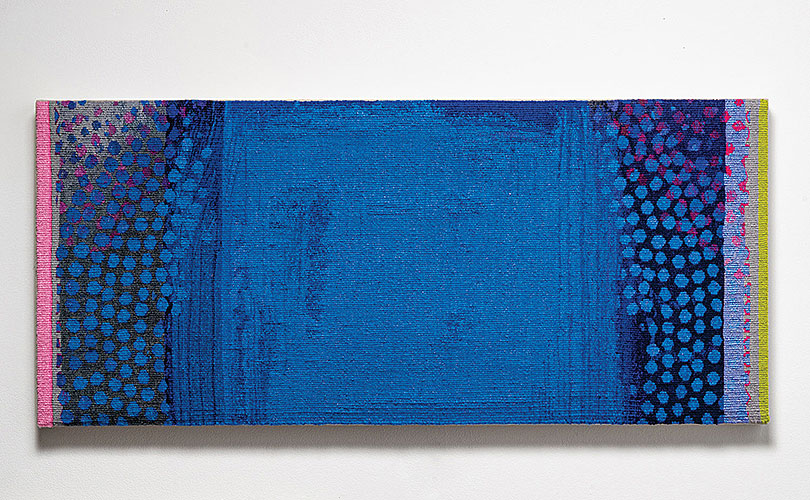
15” x 33.5”, 2010. photo by Tom Grotta
You’ll find more about these artists at browngrotta.com.

